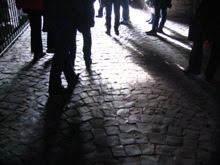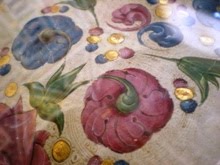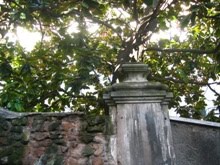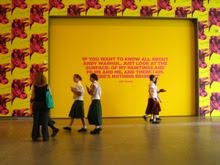Ok, so I did enjoy my trip to see ol' mister Dali, despite my apprehensions. But ever since, I have been feeling a little bored by the prospects at the NGV. Enter, stage left, contemporary Australian artist Ricky Swallow. Oh wow, oh wow, oh wow. Things are looking up.
Swallow creates intricately detailed sculptures of seemingly insignificant objects, everyday objects which have been rendered arbitrary through familiarity and regular usage. Pop culture objects which we all hold dear, yet don't think about in detail due to a cloud of nostaligia. Well, detail is Ricky Swallow's middle name, and his sculptures reinvent these forgotten objects, making them eternal rather than transient, and infusing value through both his choice of material and through the laborious process of hand carving. Did I mention, wow?
The NGV has subtitled the exhibition "The Bricoleur," which leaves itself open for several interpretations. The word itself is a little ambiguous, given that it has been borrowed into English from French, and translation is a slippery game at the best of times. Even I can't concretely say what I think it means. Having sifted through several definitions, the common understanding is that bricolage involves assembling art from disparate materials, making something from the bits and bobs you find around you. I find this a bit odd when used to describe Ricky Swallow, because despite various media featuring throughout his oeuvre, each sculpture is made from one carefully selected medium. The whole sculpture. And they are sculptures, too, not assemblages. That said, and this is where the issue of translation comes into play,bricoleur can also mean "to tinker," or "to fiddle," and the fiddly, painstaking detail on Swallow's sculptures makes such a term ideal for him.
The NGV explains its use of the term 'bricoleur' thus:
Like the bricoleur put into popular usage by anthropologist Claude Levi-Strauss in his seminal book The Savage Mind, Ricky Swallow creates works of art often based on objects from his immediate surroundings. His method, however, is more of a second order bricolage: his sculptures are not assemblages of found objects, but rather elegantly crafted things.
I would argue that there is a distinct difference between sculpture and/or art MADE FROM one's everyday surroundings, and art BASED ON objects from the everyday. The fact that Swallow's sculptures are carved from high quality timber works to create an ironic contrast with their subject matter. Form and medium have a complex and shifting interrelationship. Furthermore, the term bricolage carries associations of a hasty, roughly constructed item, which does not fit with the laborious, painstaking nature of Swallow's sculptures. Maybe I am reading too much into this, then again maybe I am just exited to have something new to talk about rather than Freudian dreams and anamorphic land masses. Bricoleur or no, I say bring on Ricky Swallow!
+of+DSCN2645-pola.jpg)
























.jpg)














2 comments:
Booking you in for a gallery trip.
Haha, a queue has already formed, Liesfield. You are occupying position number two. Lucky for you I'll be heading back countless times :)
Post a Comment